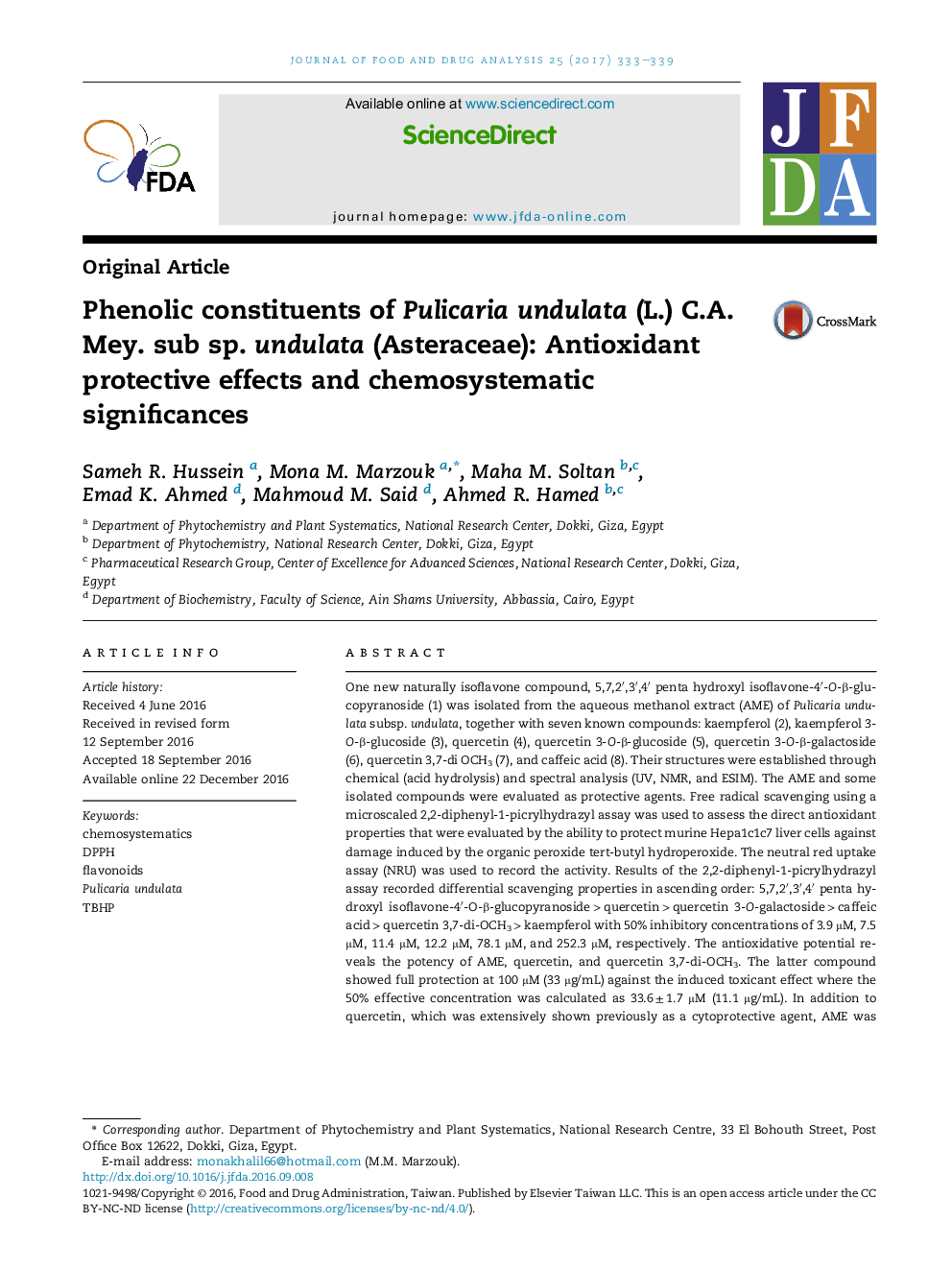| کد مقاله | کد نشریه | سال انتشار | مقاله انگلیسی | نسخه تمام متن |
|---|---|---|---|---|
| 5551141 | 1402940 | 2017 | 7 صفحه PDF | دانلود رایگان |

- Compound (1) was isolated for the first time from nature.
- The anti-DPPH activity of the isolates showed a chemical structural dependence.
- The anti-oxidative potential reveals the potency of AME, quercetin and compound 7.
- The isolates were found to be significantly chemosystematic markers.
One new naturally isoflavone compound, 5,7,2â²,3â²,4â² penta hydroxyl isoflavone-4â²-O-β-glucopyranoside (1) was isolated from the aqueous methanol extract (AME) of Pulicaria undulata subsp. undulata, together with seven known compounds: kaempferol (2), kaempferol 3-O-β-glucoside (3), quercetin (4), quercetin 3-O-β-glucoside (5), quercetin 3-O-β-galactoside (6), quercetin 3,7-di OCH3 (7), and caffeic acid (8). Their structures were established through chemical (acid hydrolysis) and spectral analysis (UV, NMR, and ESIM). The AME and some isolated compounds were evaluated as protective agents. Free radical scavenging using a microscaled 2,2-diphenyl-1-picrylhydrazyl assay was used to assess the direct antioxidant properties that were evaluated by the ability to protect murine Hepa1c1c7 liver cells against damage induced by the organic peroxide tert-butyl hydroperoxide. The neutral red uptake assay (NRU) was used to record the activity. Results of the 2,2-diphenyl-1-picrylhydrazyl assay recorded differential scavenging properties in ascending order: 5,7,2â²,3â²,4â² penta hydroxyl isoflavone-4â²-O-β-glucopyranoside > quercetin > quercetin 3-O-galactoside > caffeic acid > quercetin 3,7-di-OCH3 > kaempferol with 50% inhibitory concentrations of 3.9 μM, 7.5 μM, 11.4 μM, 12.2 μM, 78.1 μM, and 252.3 μM, respectively. The antioxidative potential reveals the potency of AME, quercetin, and quercetin 3,7-di-OCH3. The latter compound showed full protection at 100 μM (33 μg/mL) against the induced toxicant effect where the 50% effective concentration was calculated as 33.6 ± 1.7 μM (11.1 μg/mL). In addition to quercetin, which was extensively shown previously as a cytoprotective agent, AME was less potent; it was capable of protecting 75% at 100 μg/mL with 50% effective concentration of 92.3 ± 4 μg/mL. Moreover, the isolated flavonoids were found to be significantly chemosystematic markers.
151
Journal: Journal of Food and Drug Analysis - Volume 25, Issue 2, April 2017, Pages 333-339